|
You are not Logged in! Log in to check your messages. |

|
|
Check todays hot topics |
Web2Project Sign in
Past sea trials:
Baseline survey sea trial, project TRIDENT'24
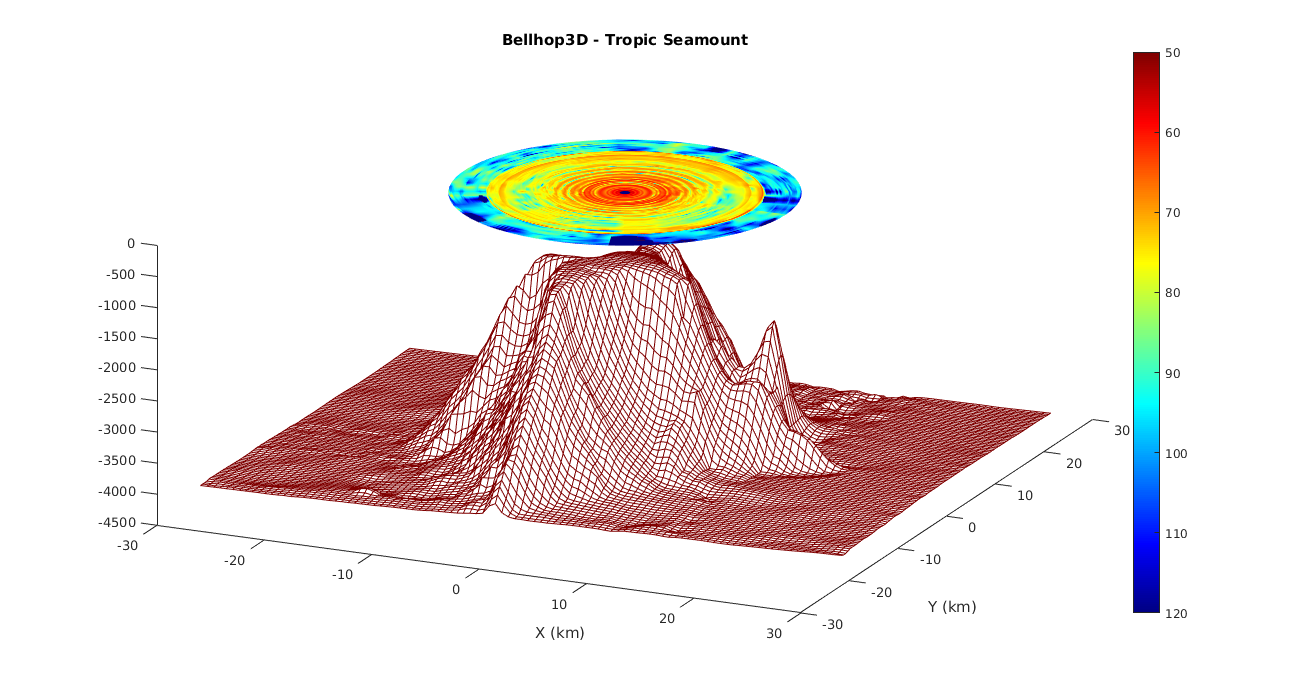
June 13 - July 3: Baseline survey sea trial on board R/V Mário Ruivo (IPMA) to gather
environmental status data to support WP2 tasks, and provide reference field data
for ocean bottom exploration impact estimation. Acoustic data will include a fixed point
vertical line array and an acoustic recorder equipped SeaExplorer glider from ALSEAMAR.
JONAS - Azores'22 field calibration experiment
June 20-24: recover and assess data from three moorings in the Faial-Pico area. Three EAR
recorders, 2 SR1 and one M35 Geospectrum vector sensor, for ocean sound calibration and
marine mammals tracking in the southwest and norteast approaches to the Faial-Pico shallow channel.
JONAS - Azores'22 field calibration experiment
May 19, 2022: deploying EARs and UALG acoustic receivers in the Faial-Pico channel during
Azores'22 sea trial. EARs on board motor boat, prior deployment:
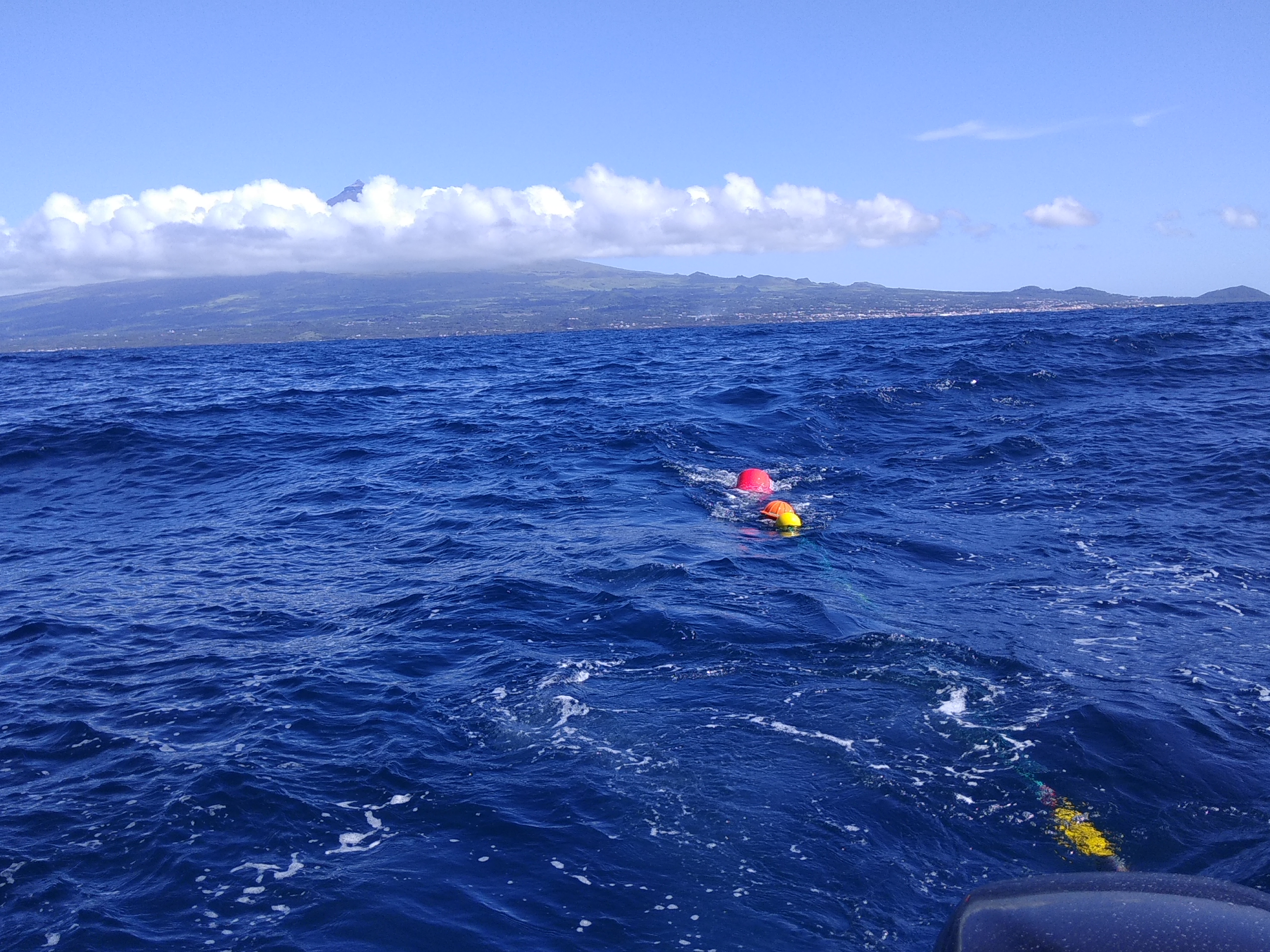
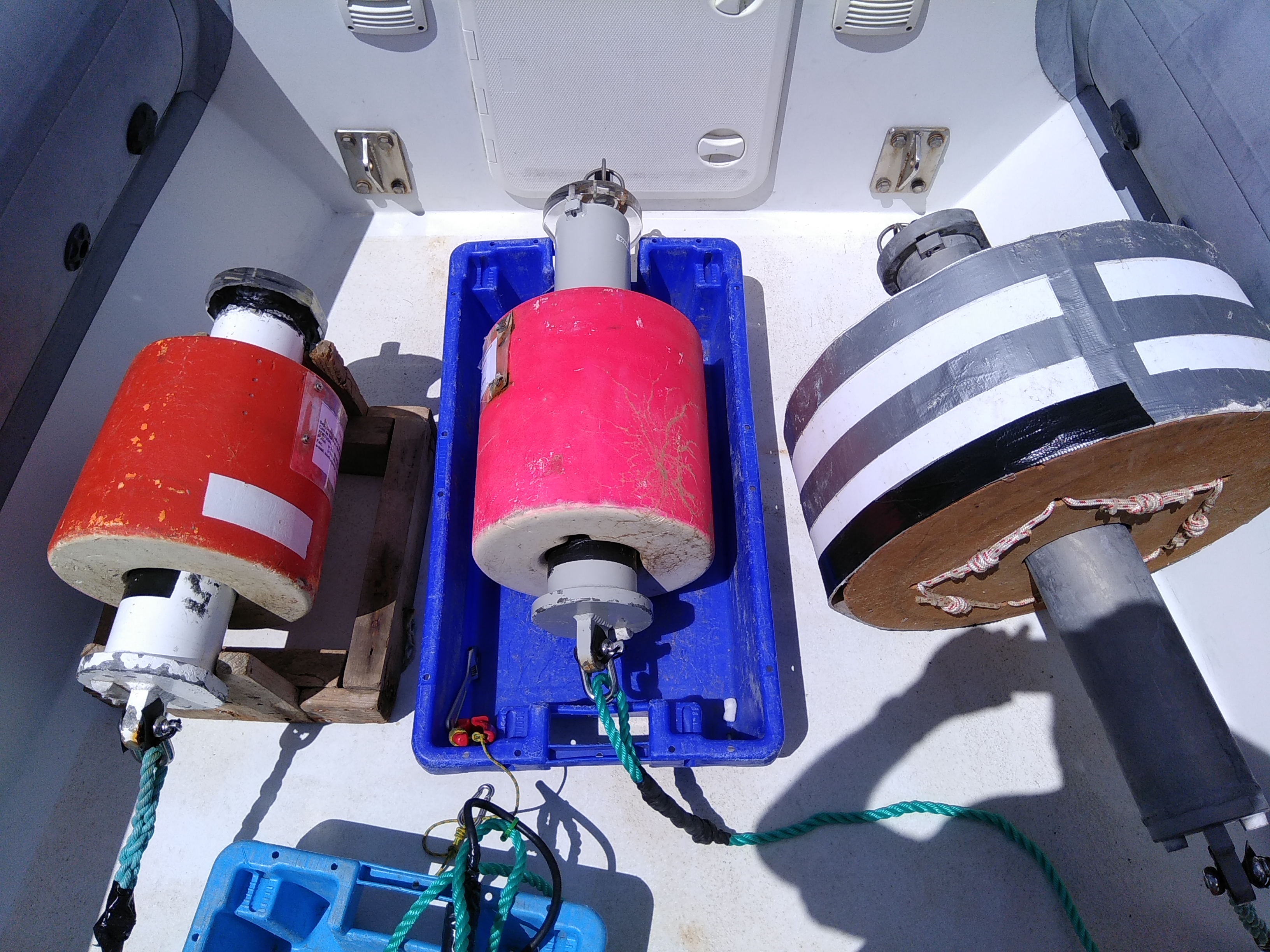
***See deployment video***
AQUAEXCEL3.0 : April 20-29, 2022 particle motion recording, Mazarron and Ametlla del Mar (Spain)
The recordings involved the SiPLAB developed vector sensor DAVS1 recorder deployed in a red tuna aquaculture tank at ICRA facility in Mazarron from April 20-27.On April 29, the DAVS1 was deployed in a offshore cage of red tuna aquaculture in Ametlla del Mar during a session of tuna sacrificing, where approximately 60 300+ Kg tuna were executed and processed in 3 hours. The objective was to determine the particle motion impact of "lupara" (the underwater gun used to execute tuna) shoots on divers.
EMSO-PT : Nov 24, 2021 Engineering test, Vilamoura
The testing involved a bottom tripod with the Geospectrum M35 vector hydrophone and the Marsensing developed recorder. A Lubell 916C sound source was deployed from the PUMA catamaran, either at fixed locations or towed along isobathymetric or cross-bathymetric routes. A CTD was used to gather sound velocity in the water column. Water depths were varying from 15 to 30 m.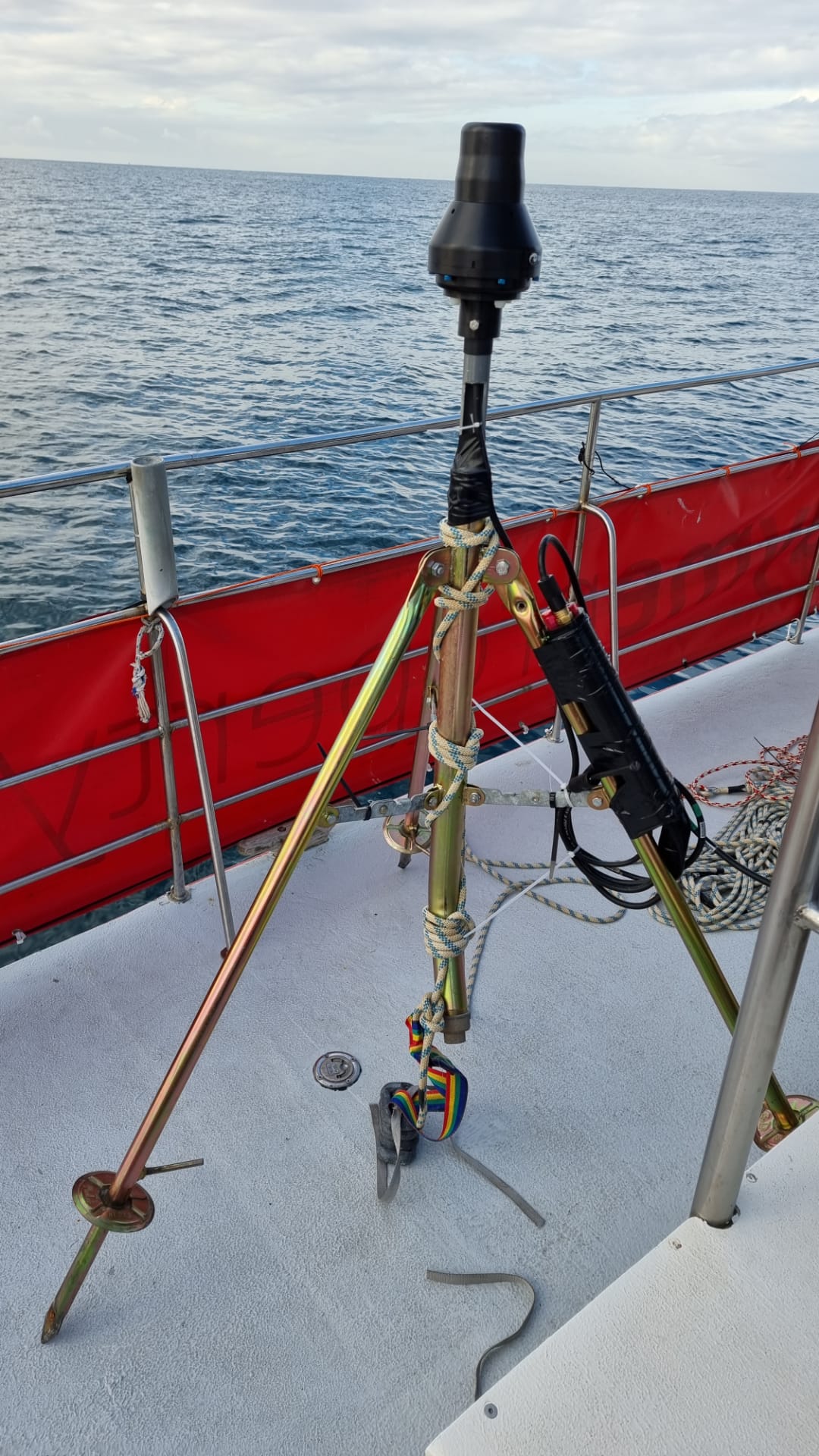
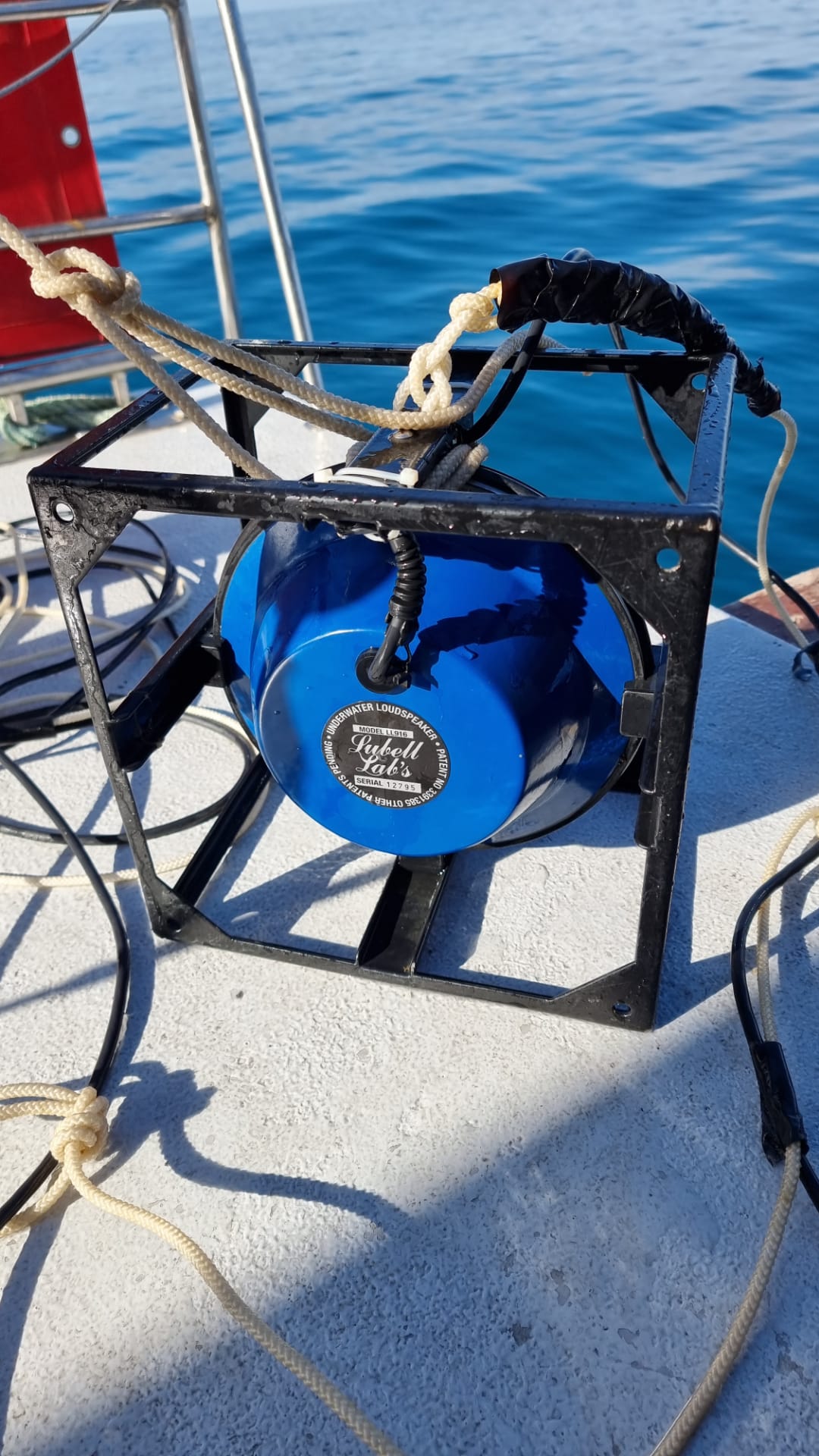
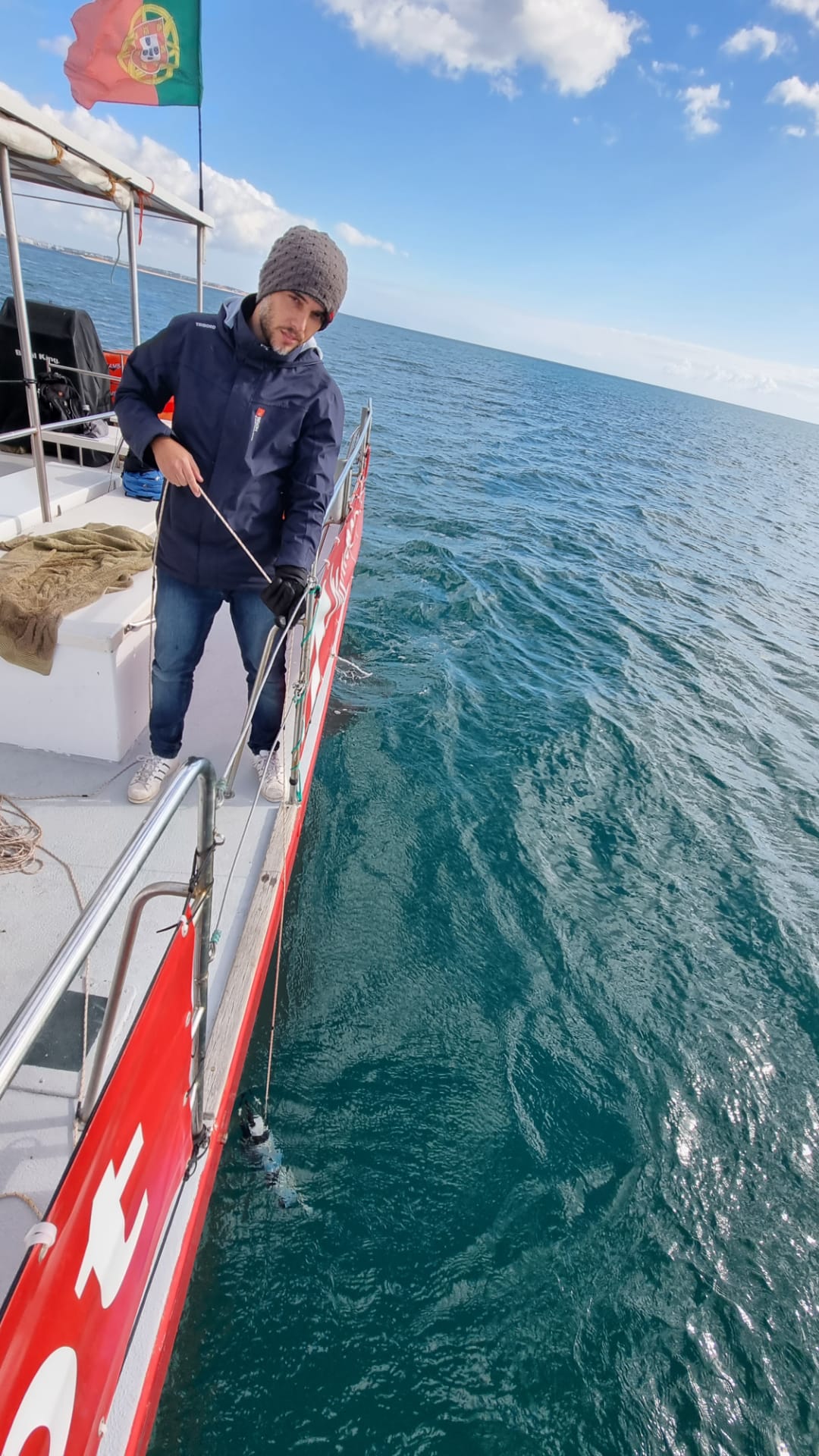
Bioacoustics experiment in Ria Formosa
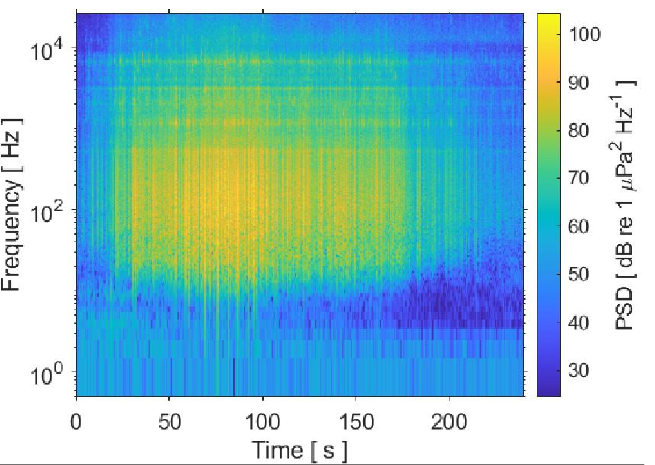
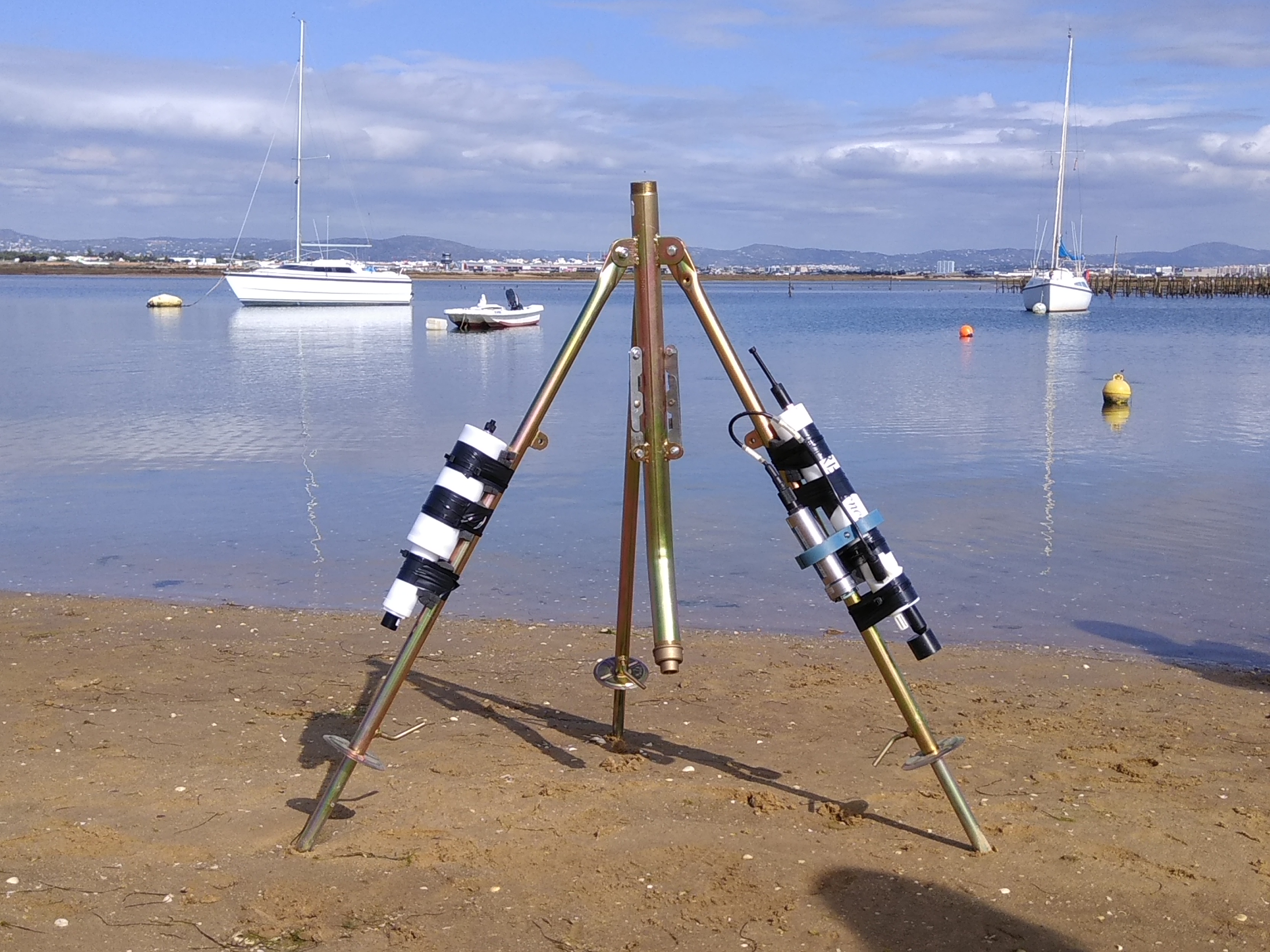
In the framework on the course of Bioacoustics (Master of Marine Biology) students have deployed an acoustic recording device and a CTD over a 24 hours period, near a bivalve aquaculture farm in Ria Formosa Natural Park, near Faro beach. Both tidal related mussel generated sound and anthropogenic noise of passing by boats was recorded together with dissolved O2 and other environmental parameters. People involved from CINTAL/SiPLAB: S.M. Jesus and R. Duarte and the Bioacoustics students.[more...].
SAVE-WHALES: Aug 1-8, 2020: monitoring sperm whales southwest of Crete, Greece
On board a sailing boat with marine biologist Alexandros Frantzis and his team for monitoring cetaceans and validating detection - validating data received on the three SWAN buoys in Sougia bay, installed by FORTH under SAVE-WHALES project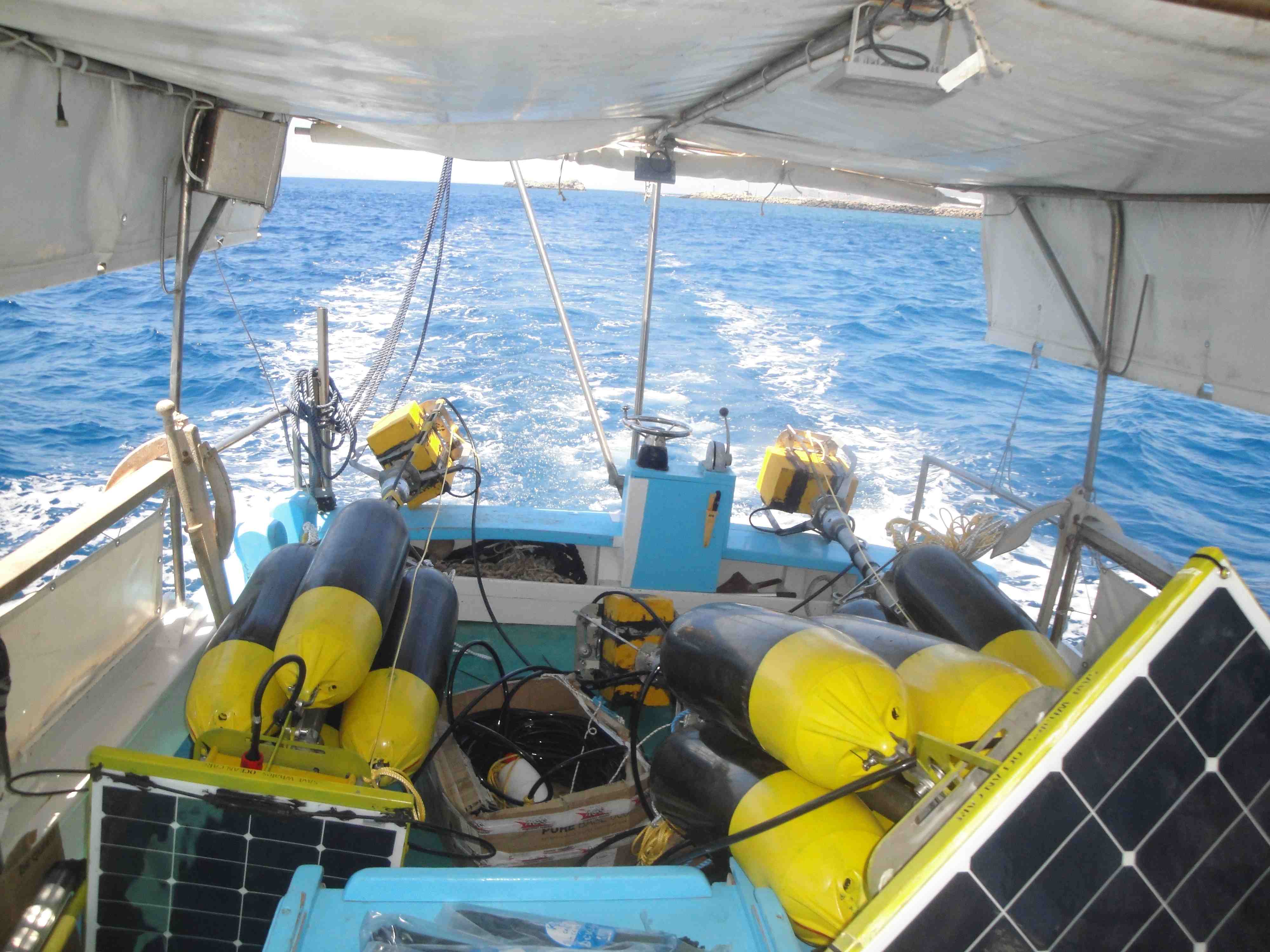
JONAS acoustic receiver crossing from Azores to Canary Islands
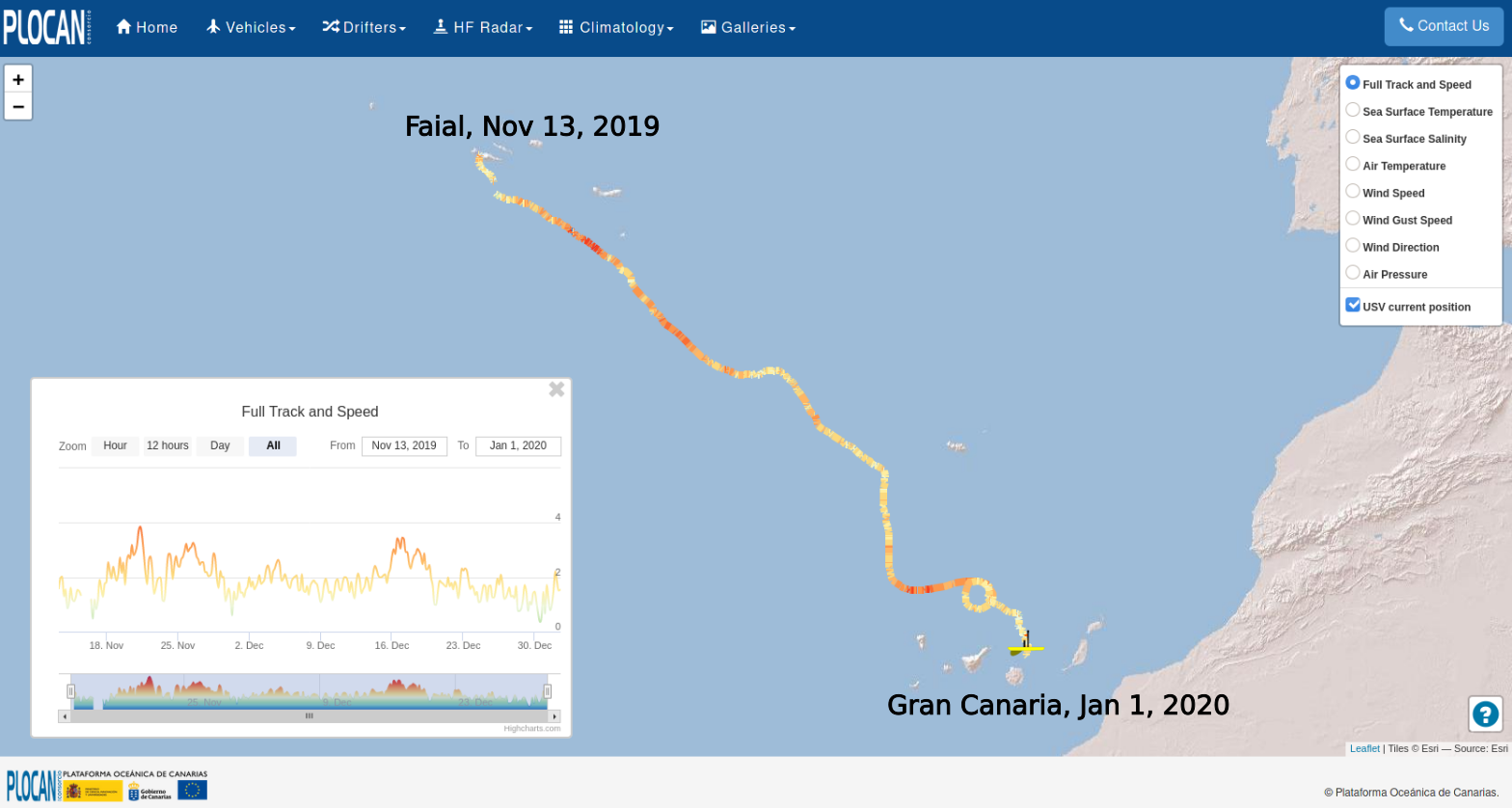
January 1, 2020: PLOCAN waveglider almost arrived in Gran Canaria, after ~1700 km and 1 month and 19 days at sea, under a collaboration with the iFADO project. See the last kms of the vehicle here, and more about the JONAS project here or the generic project web page here.
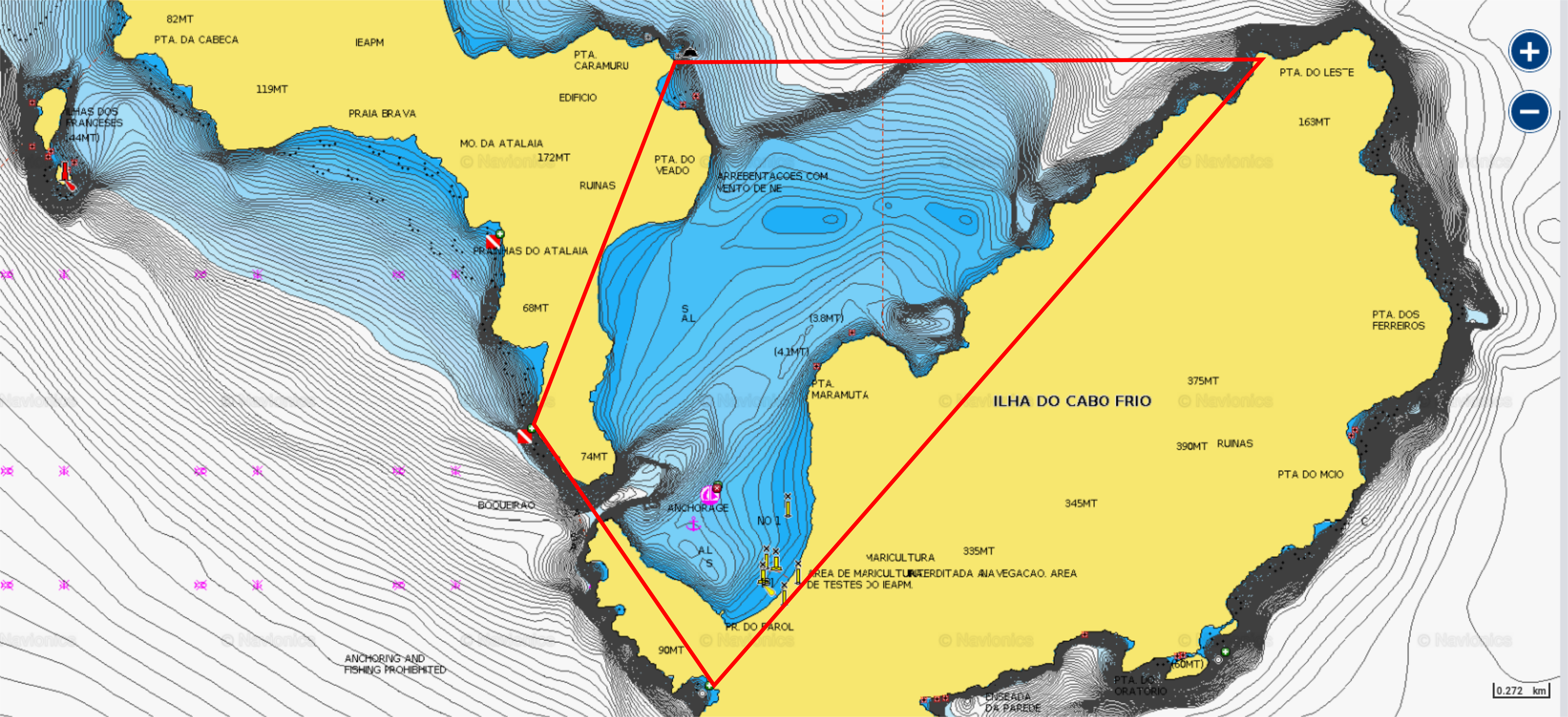
BIOCOM'19 - Bio Communications sea trial
This IEAPM - UALG joint experiment took place in the bay of the I. of Cabo Frio,
Arraial do Cabo (RJ,Brasil) from 14 to 18th January, 2019. The objective of the experiment
is to gather data to support the research being carried out in the IEAPM lead Biocom
project, namely, acoustic communications transmissions, soundscape and particle motion
data to characterize the biological ecosystem off the Cabo Frio Island. The correlation
biological activity with the upwelling regime is of particular interest.
People involved from UALG: S.M. Jesus.
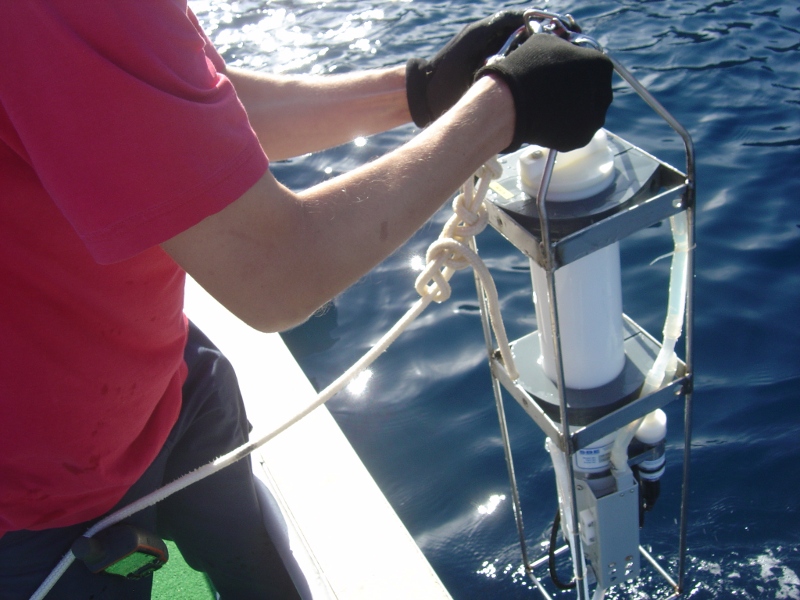
SEAOX'18 23 - 30 September 2018
A SEAOX sea trial took place at the STARESO -
Station de Recherches Sous-marines et Oceanographiques in Corsica (France). The
experiment is conducted under project SEAOX (PTDC/EEIPRO/ 2598/2014), which aims at
using the properties of sound propagation in ocean water as a proxy of the amount of
oxygen bubbles to monitor the photosynthetic production of marine plants.
See here for a description of a previous
experiment in that area carried out in 2011 and 2013 under SENSOCEAN project.
People involved from CINTAL: P. Felisberto, J. Parente, S. Jesus and from CCMAR:
J. Silva and R. Santos.
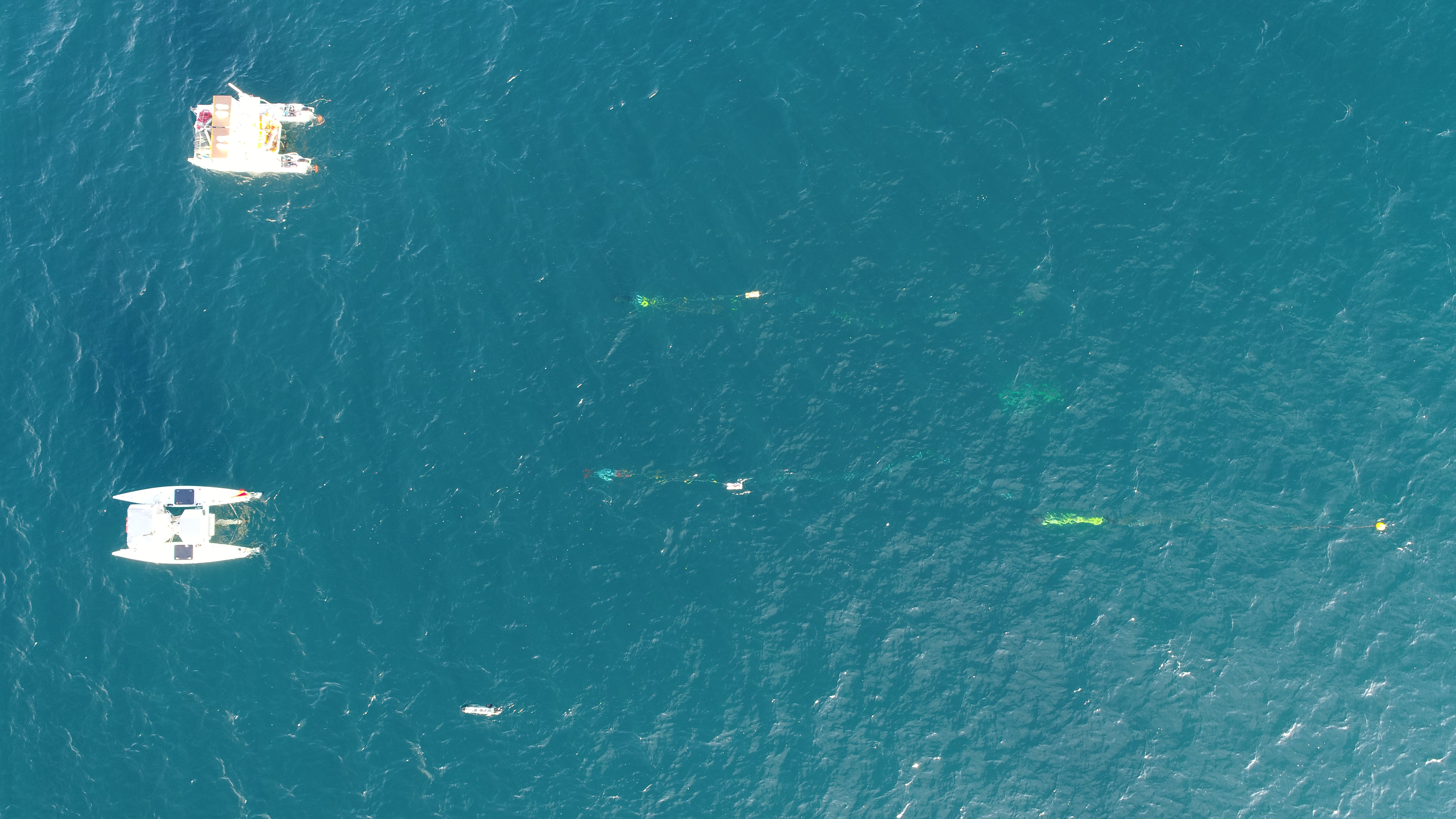
WiMUST'18 (Port of Sines, 21-28 January 2018)
was the final project sea trial having the collaboration of all partners. It took place in two areas: inside and just outside of the Port of Sines, encompassing all aspects of vehicle navigation, guidance and control, underwater communications and seismic acoustic signal recording and analysis.
People involved from CINTAL: P. Felisberto, P.J. Santos and F. Zabel.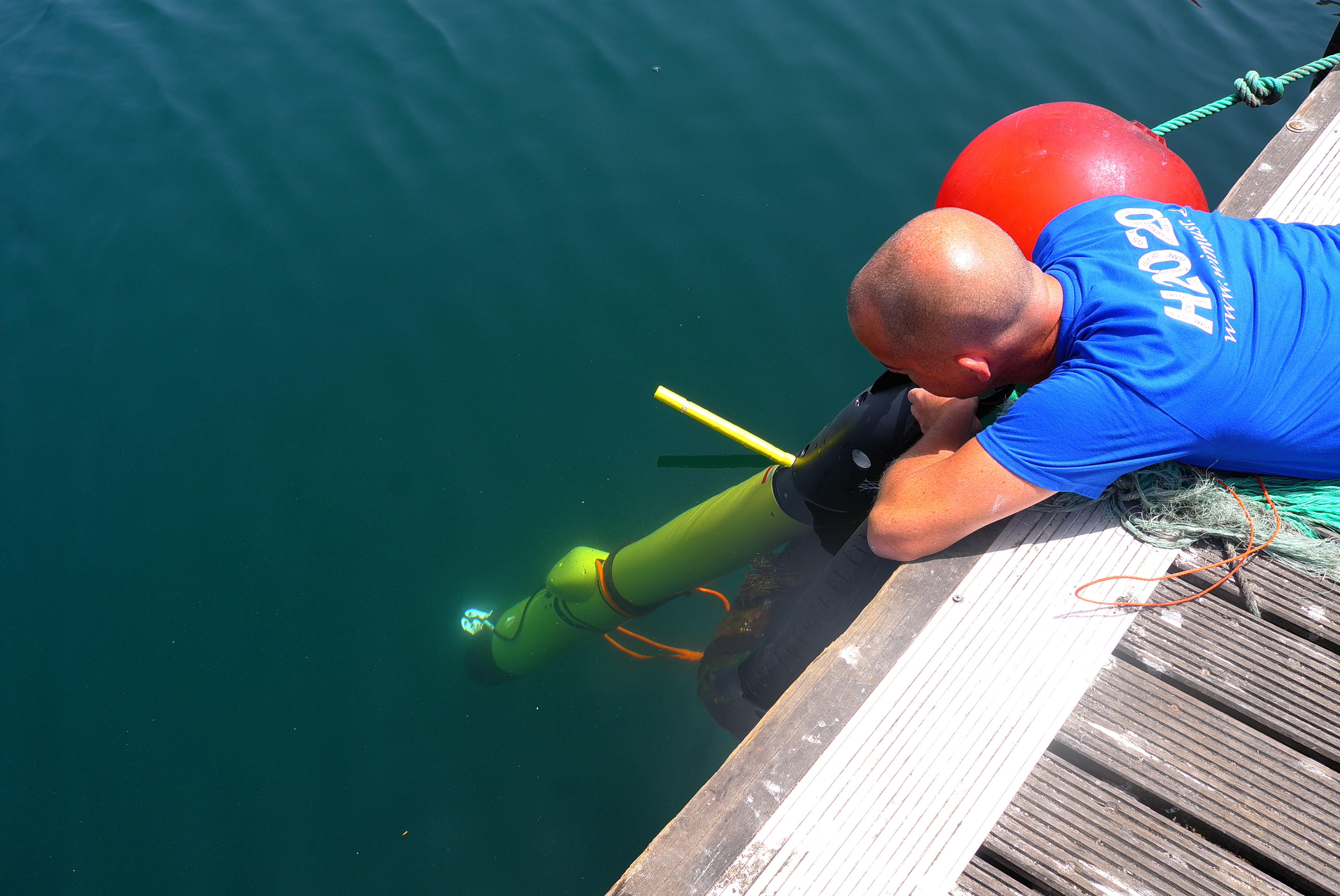
WiMUST'17 (Port of Sines, 17-21 July 2017)
was a project wide sea trial with the collaboration of all partners. It took place in a protected inner bay of the Sines Port encompassing all aspects of vehicle navigation, guidance and control, underwater communications and seismic acoustic signal recording and analysis.
People involved from CINTAL: P. Felisberto, P.J. Santos, S.M. Jesus, C. Soares, A. Mantouka and F. Zabel.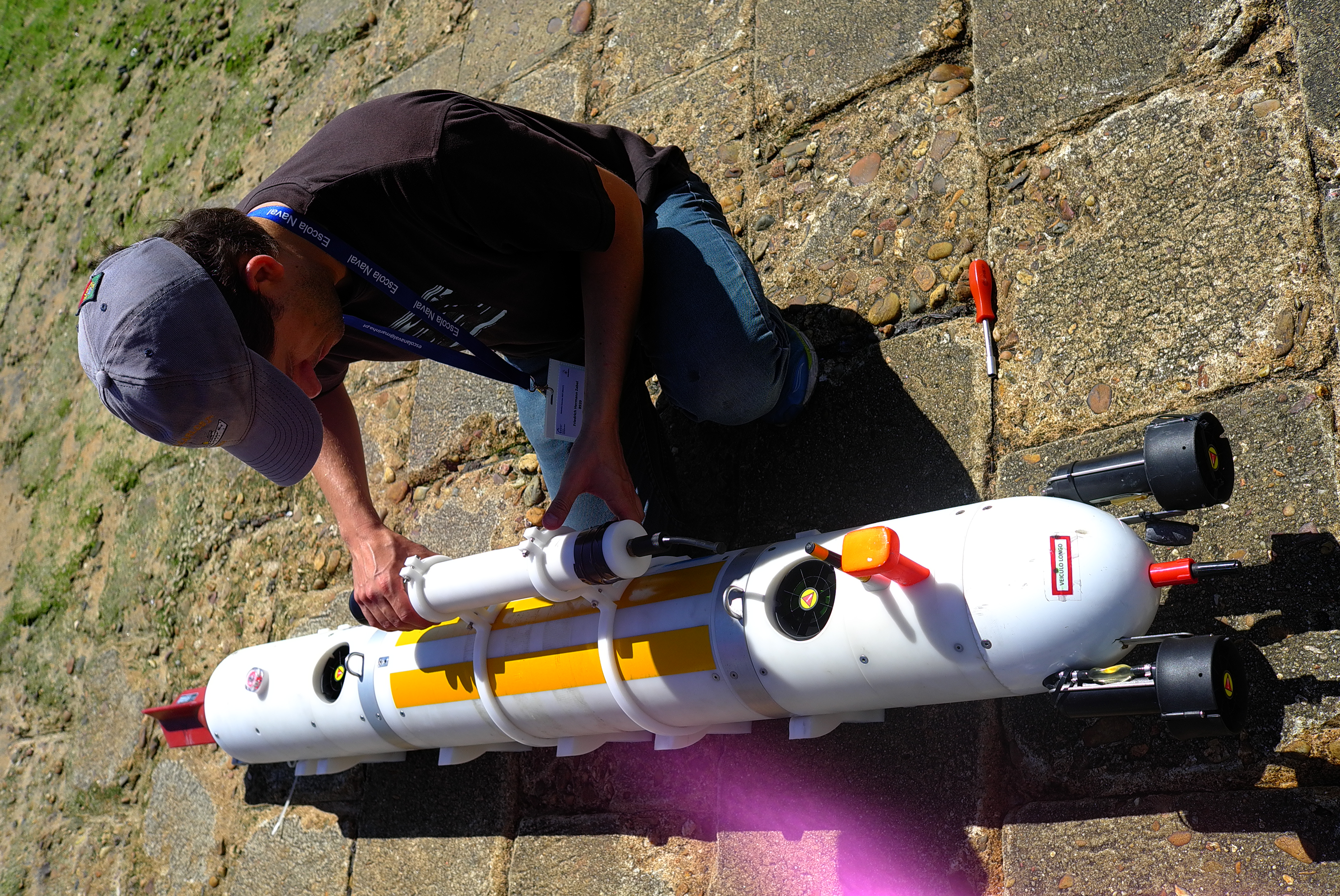
REX'17 (Tejo river, 10-14 July 2017)
SiPLAB participation on REX'17 took place out of the Alfeite Naval Base in the river
Tagus in front of Lisbon, under the organization of CINAV (Portuguese Navy), INESC-TEC
(Porto), Marsensing, University of Porto and University of Algarve with the support of
the PT-Navy. During the sea trial a number of robotic and ocean observation equipment
were deployed and tested, involving surface vehicles, autonomous underwater vehicles,
underwater localization and tracking systems and vector sensors
People involved from UALg: P. Felisberto, P.J. Santos, S.M. Jesus and F. Zabel.
Data report: abstract,
PDF.
Data repository:
Related publications:Test plan
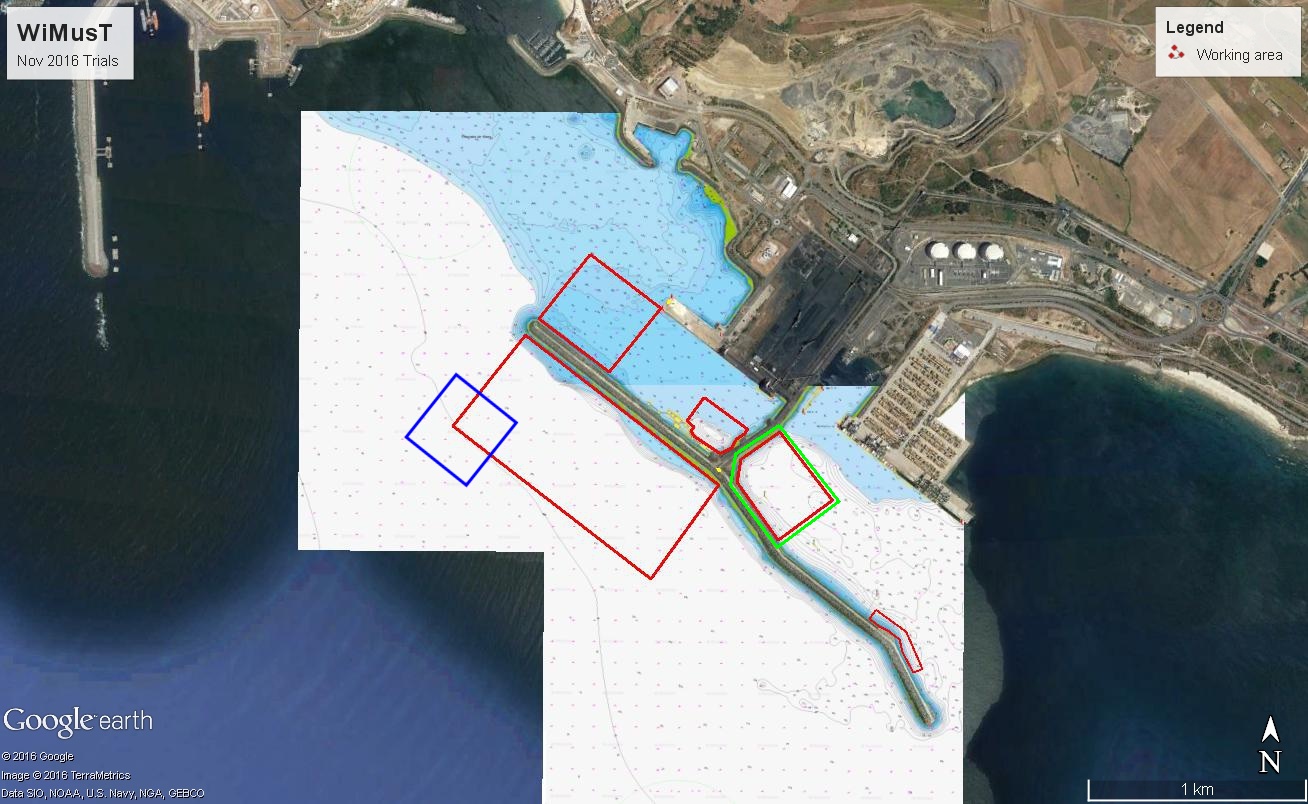
WiMUST'16 (Port of Sines, 21-25 November 2016)
took place in a protected area of the port of Sines (southwest of Portugal). It involved all project partners, encompassing all aspects of vehicle navigation, guidance and control, underwater communications and seismic acoustic signal recording and analysis. See video
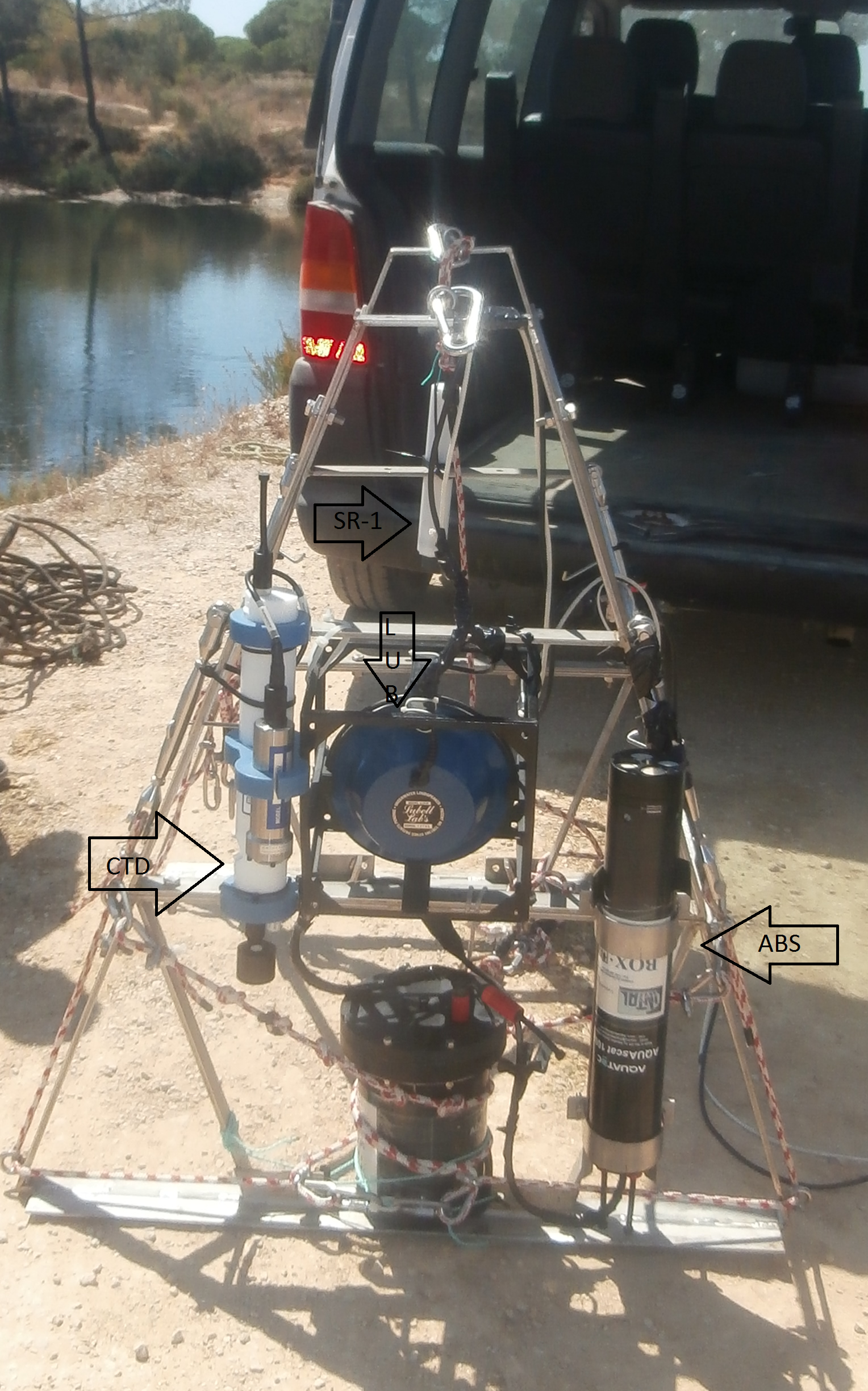
SEAOX'16 - EPPO tank experiment
The experiment took place at EPPO station in Olh\tilde ao from 26th to 28th July 2016. The objective of the experiment was to gather a preliminary data set for the development of the acquisition systems, data processing methods and models. The results show that the oxygen production of Zostera marina community gives rise to a visible acoustic signatures in low frequency signals, acoustic backscatter and ambient noise, that can be explored to evaluate and quantify the oxygen production as bubbles. Read here
People involved from UALg: P. Felisberto, A. Silva and J. Parente.Related publications: ASA paper and/or Oceans'17 paper
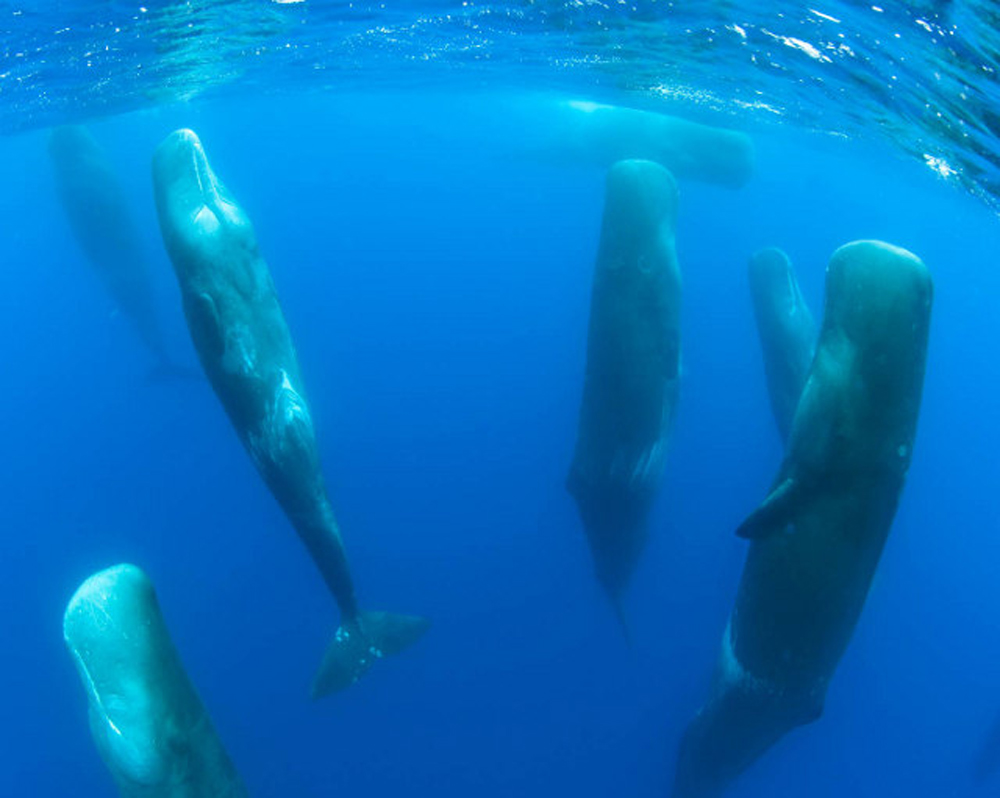
EDELWEIS'14, 4 - 11 August 2014
EDELWEIS'14 took place in the Ionian Sea, area off of the Island of Zakinhtos (Greece)
along the Hellenic Trench, a known location to encounter sperm whales communities during this period of
the year. According to the actual plan the experiment used the R/V Nereis from Pelagos Institute.
During the sea trial two AOB - Acoustic Oceanographic Buoys (CINTAL) were deployed for whale
listening and localization algorithm testing.
People involved from UALg: S.M. Jesus and F. Zabel.
Activities: online log
Data report: abstract, PDF
Data repository: (to be made available)
Related publications: Test plan
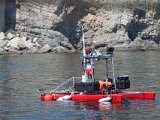
SENSOCEAN-REX'13 4-6 July 2013
REX'13 took place in the area of Sesimbra (Portugal) with the participation of CINAV (Portuguese Navy),
INESC-TEC (Porto), Marsensing, University of Porto and University of Algarve aboard the landing craft
NRP Bacamarte. During the sea trial a large number of robotic and ocean observation equipment was
deployed and tested involving surface vehicles, autonomous underwater vehicles, gliders, underwater
communications modems, underwater localization and tracking systems and acoustic hydrophones.
Breaking news of the event can be seen
here
(in portuguese).
People involved from UALg: P. Felisberto, S. Ijaz, B, Jiang, F. Zabel and P. Santos.
Data report:
Data repository:
Related publications:
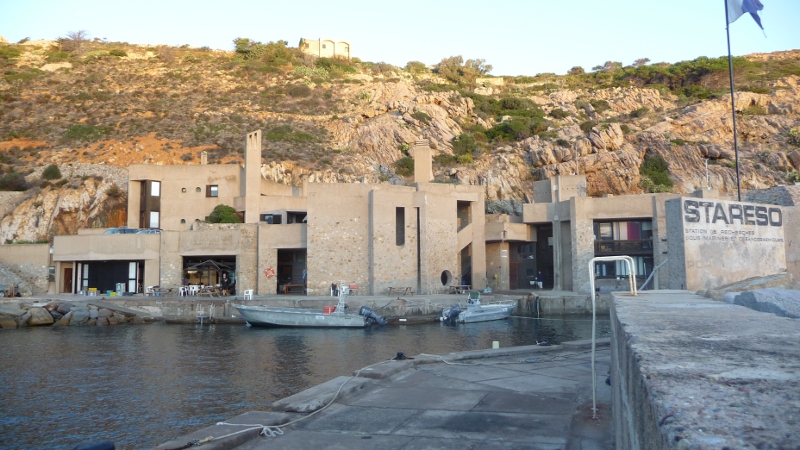
SENSOCEAN 29 April -10 May 2013
The SENSOCEAN sea trial took place at the STARESO - Station
de Recherches Sous-marines et Oceanographiques in Corsica (France). The objective is to
test the recently developed vertical vector sensor array (VSA) )for determining bottom and sub-bottom
geoacoustic properties using the unique characteristics of the VSA, namely its compact size and
directivity gain in the vertical direction. The system will also be employed to test whether it
can be used to measure Seagrass oxygen production during its daily cycle and how it affects the
propagation of sound in the ocean. The received acoustic signal can be analysed
to infer on the oxygen production on a given transect.
See here for a description of a previous
experiment in that area carried out in 2011.
People involved from UALg: P. Felisberto, P. Santos, O. Rodríguez and F.Zabel.
Data report: abstract,
PDF.
Data repository:
Related publications:
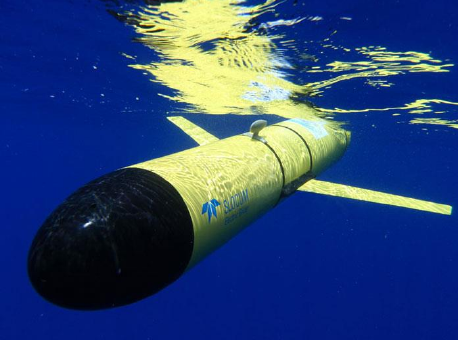
AcousticRobot'13, 5 - 8 May 2013
The AcousticRobots'13 sea trial took place in the area near Sesimbra (Portugal) and
has the objectives of demonstrating the usage of sea going robotic vehicles to perform ocean
noise mapping in areas where sound sources have a large spatial and temporal dynamic and
variability, in the framework of project Robonoise-QREN, as well as to demonstrate the usage
of acoustic devices in underwater robots (in this case a glider) for underwater acoustic
communication, to increase its positioning accuracy or to perform acoustic tomography
operations in the framework of project COGNAT- FCT. See an online documentary
here.
People involved: A. Silva, F.Zabel, C. Soares from Cintal/Marsensing as
well as other partners from Escola Naval and INESC-Tec (Porto).
Data report:
Data repository:
Related publications:

SeaGrass 10-19 Oct 2011
This is a sea trial at the STARESO - Station de Recherches Sous-marines
et Oceanographiques in Corsica. Our objective is to measure how the Seagrass oxygen production during its
daily cycle affects the propagation of sound in the ocean. The received acoustic signal can be analysed
to infer on the oxygen production on a given transect [ online blog].
People involved from UALg: P.Felisberto, F.Zabel and C.Martins.
Data report: Report 04/2011.
Data repository: none
Related publications:
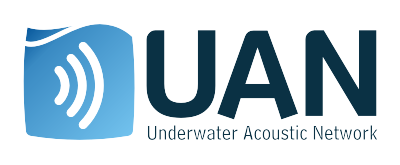
UAN11 23-28 May 2011
This sea trial took place in the Trondheim Fjord (Norway) in the workframe
of the UAN project. This test comprised the deployment of a number
of communication nodes including AUV's, fixed nodes and communication arrays in order to obtain
a realistic representation of an adhoc underwater acoustic network. It will involve efforts
from various research groups at CINTAL (Portugal), ISME (Italy), Kongsberg (Norway),
SINTEF (Norway) and SSI(Italy)[ online info].
People involved from UALg: S.M. Jesus, A. Silva, F. Zabel, C. Martins and Usa Vilaipornsawai.
Data report: here.
Data repository: none.
Related publications:
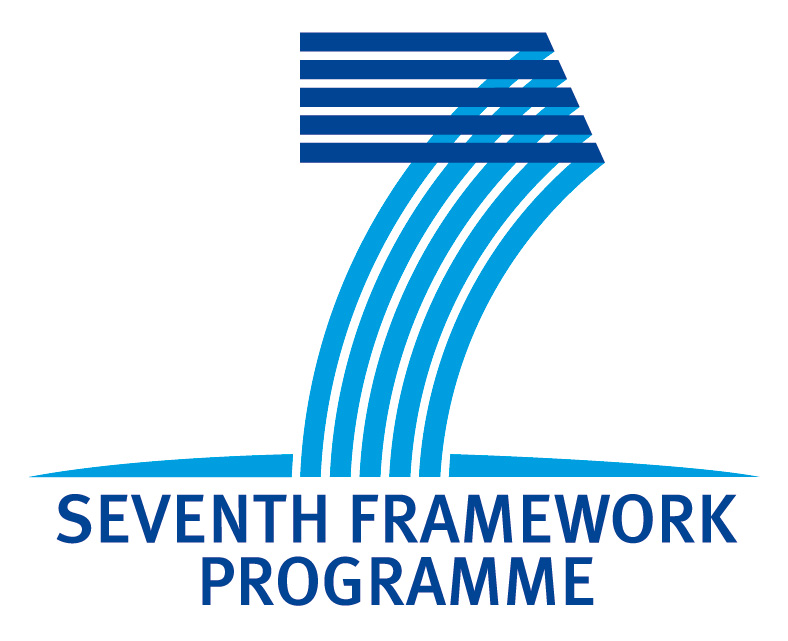
OAEx'10 November 2010
This sea trial took place off Cabo Frio region (Brazil) in the workframe
of the OAEx project. This test comprised the deployment of a number
of acoustic and non acoustic assets near and off the coast. The idea is to explore the capabilities of acoustic
signals to estimate the static and dynamic characteristics of the area, prone to a strong upwelling regime from
the south.
People involved from UALg: P. Felisberto, P. Santos, N. Martins and S. Ijaz .
Data report:
Data repository: none.
Related publications:

UAN10 6-25 September 2010
This is a sea trial that took place nearby Pianosa Island, off the italian coast, South of Elba I.
in the workframe of the UAN project. This test will comprise the deployment of a number
of communication nodes including AUV's, fixed nodes and communication arrays in order to simulate an
adhoc underwater acoustic network. It will involve efforts from various research groups at CINTAL (Portugal),
ISME (Italy), Kongsberg (Norway), from NATO Undersea Res. Centre (La Spezia, Italy) and from the Italian Navy
[ online info].
People involved from UALg: A. Silva, F. Zabel, C. Martins and Usa Vilaipornsawai.
Data report: here.
Data repository: none.
Related publications:
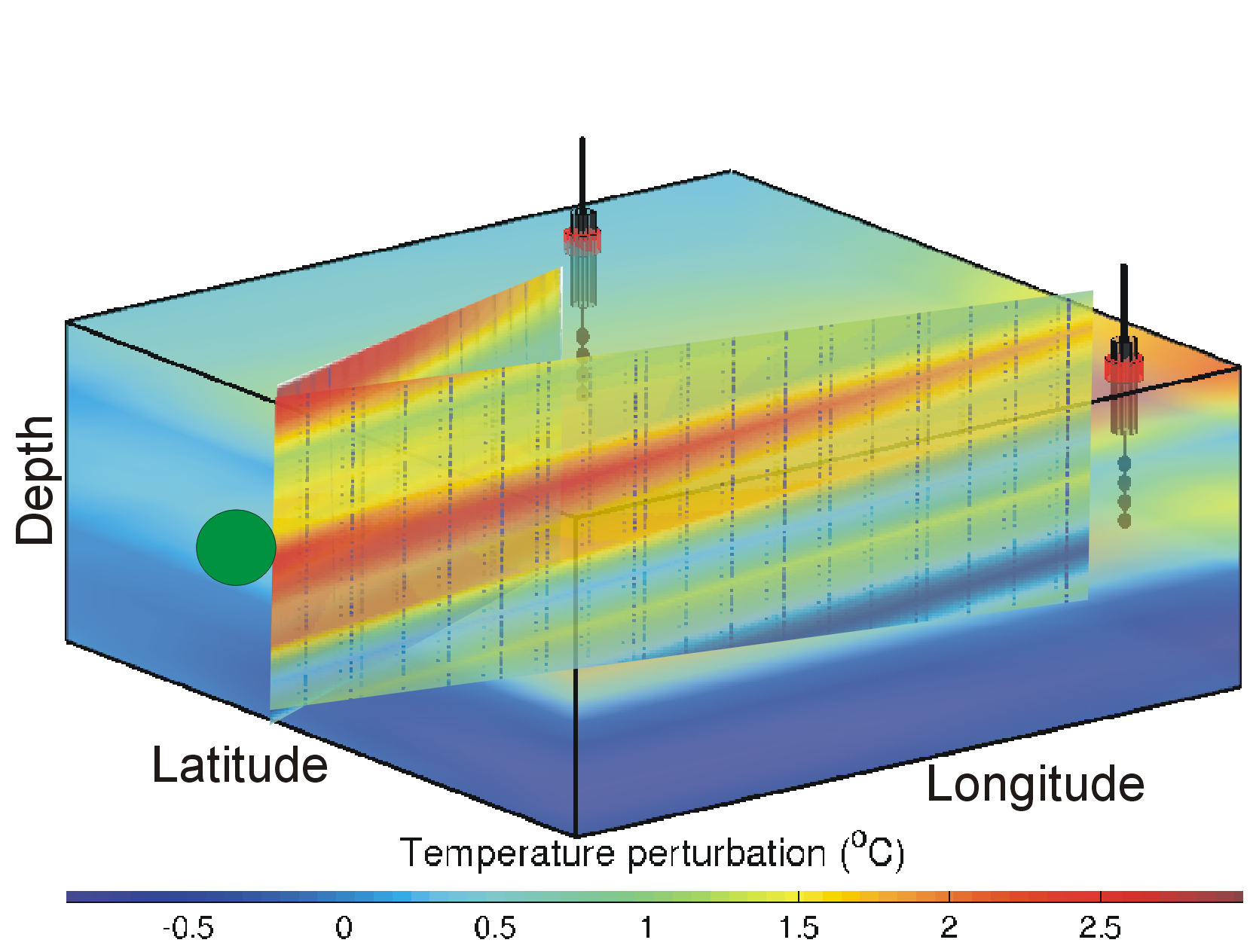
WEAM - Phitom joint Sea Trial 22-25 June 2010
This sea trial took place off the port of Vilamoura (Portugal) from 22 - 25 June 2010
with the aim of testing field calibration techniques for the WEAM project
and performing communication transmissions to/from drifting multiple receivers for testing both channel
geometry compensation time-reversal techniques as well as diversity combining techniques underthe
Phitom project. This common experiment took advantage of common
equipment to be used in both projects and the fact that different frequency bands are being used allowing for
a best optimization of time and resources. Equipment included two free drifting AOB's and CINTAL's mid and
high frequency suspended sources [...more].
People involved from UALg: P. Felisberto, F. Zabel, C. Martins and
F. Lopes and other personnel from WEAM and Phitom partners (WEC and ISR-Lisboa).
Data report: Report 04/2010.
Data repository: none.
Related publications:
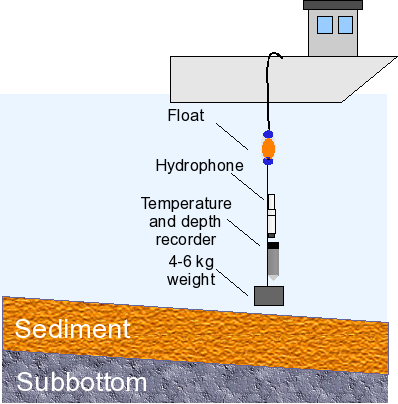
PICO 2010 June 2010
A noise measurement test took place off the Island of Pico (Azores) nearby the
wave energy generator facility in June 2010. This test is foreseen under the
WEAM project as a preliminary step for characterizing the propagation of
acoustic noise generated in the ocean by wave energy generators
[...more].
People involved from UALg: P. Felisberto and other personnel from WEC and Marsensing.
Data report:
Data repository:
Related publications:
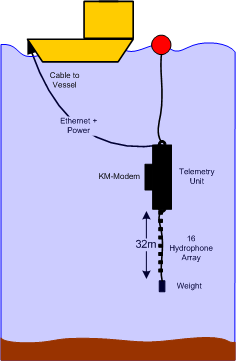
UAN Eng. Test March 2010
This is an engineering test that took place off the port of Vilamoura (Portugal) on March 17, 2010
with the aim of testing the base station hardware developed under the UAN
project. The base station is composed bya 16 hydrophone array, a telemetry unit and a Kongsberg modem.
This system will be deployed as show in the figure, and communication signals will be
transmitted from another boat using either the Kongsberg modem or a dedicated sound source
[...more].
People involved from UALg: A. Silva, F. Zabel and C. Martins and personnel from other UAN partners.
Data report:
Data repository:
Related publications:

UAB'07 Sea Trial 2 - 16 September
This sea trial takes place in the Hopavagen Bay and Trondheimsfjord in Norway from
September 2 to 15, 2007, involving the University of Algarve (UALG) and the Ocean Acoustics
team from NTNU (NTNU). The objectives of the experiment includes testing a transmit receive
array newely developed at SiPLAB, and its usage as acoustic barriers for detecting underwater
intruders and underwater communications (MIMO) [...more].
People involved from UALg: S.M. Jesus, A. Silva, F. Zabel and C. Martins.
Data report: Report 05/2007.
Data repository: none
Related publications:
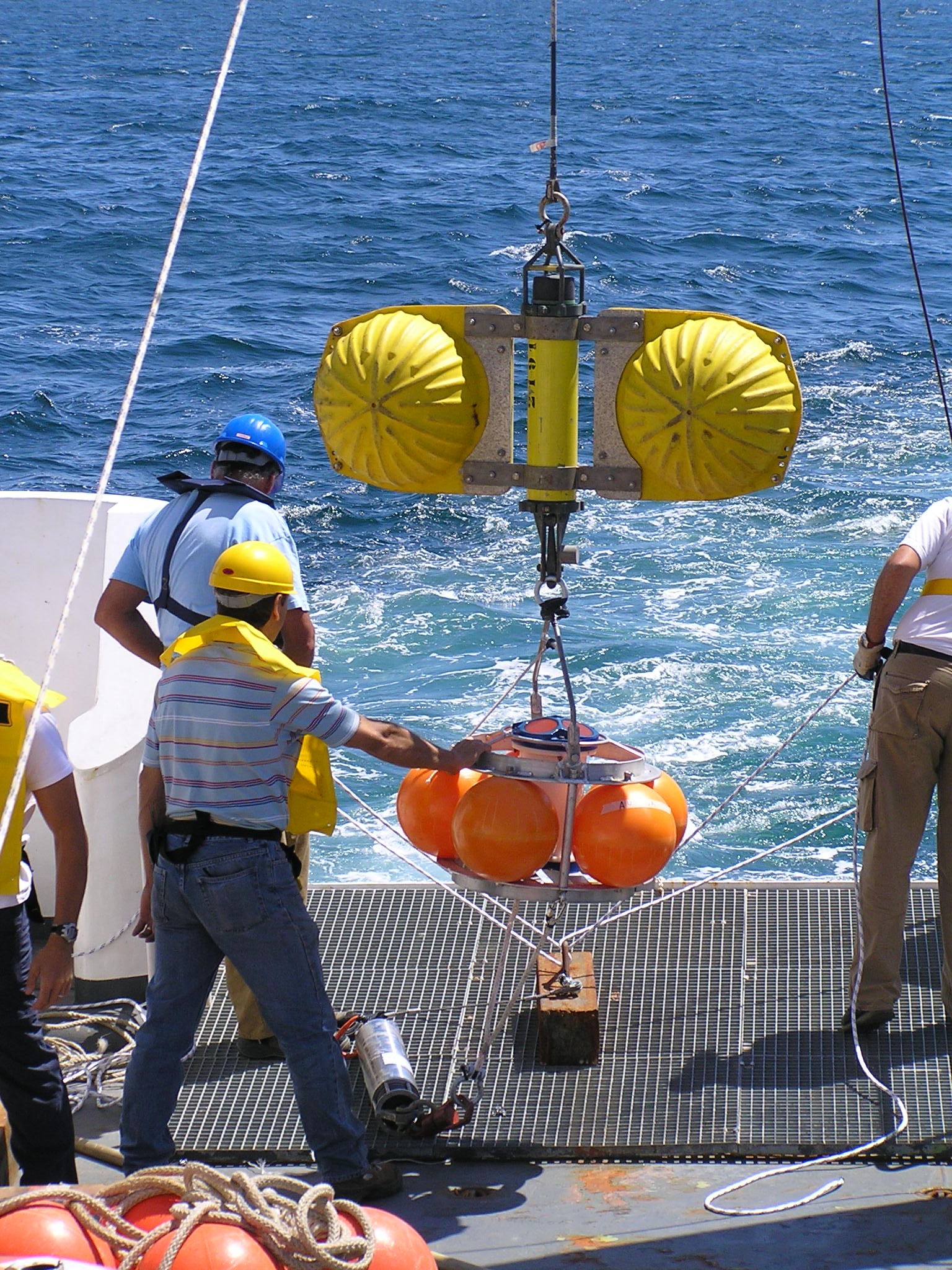
RADAR Sea Trial (RADAR'07), 9-16 July 2007
The RADAR'07 sea trial took place on the Portuguese Continental Shelf off the town of Setúbal,
50 km south from Lisboa. This sea trial involves teams from the Hidrographic Institute of the Portuguese
Navy, the NATO Undersea Research Centre (NURC), La Spezia, Italy, the company Heat Light and Sound
Research (HLS), Sand Diego, USA, the Naval Research Laboratory (NRL), Stennis, USA, and the University
of Algarve (UALG), aboard two research ships: the NRP Auriga and the NRP D. Carlos I from
July 9 to 16. The objectives of this experiment are centered on ocean acoustic tomography, both
low frequency using the network tomography concept (UALG) and high frequency for detecting features
such as internal waves and sea currents (NURC). Other topics include ocean circulation prediction (NRL),
underwater communications and time reversal testing (HLS,UALG)
[...more].
People involved from SiPLAB: S.M. Jesus, C. Soares, F. Zabel and C. Martins.
Data report: Report 04/2007.
Data repository: none.
Related publications:
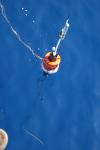
Blue Planet Experiment (BP'07) Apr 20 - May 2, 2007
The BP'07 sea trial took place in the area South from Elba Island in Italy, from April 20 to May 2,
and involves two oceanographic ships: the HrMs Snellius from the Dutch Royal Navy and the NRV Leonardo from
the NATO Undersea Research Centre (NURC, Italy) and research teams from the Université Libre de
Bruxelles, TNO, the Netherlands Royal Navy College, NURC and University of Algarve.
[...more].
People involved from SiPLAB: S.M.Jesus, C. Martins and F. Zabel.
Data report: Report 03/2007.
Data repository: none.
Related publications:
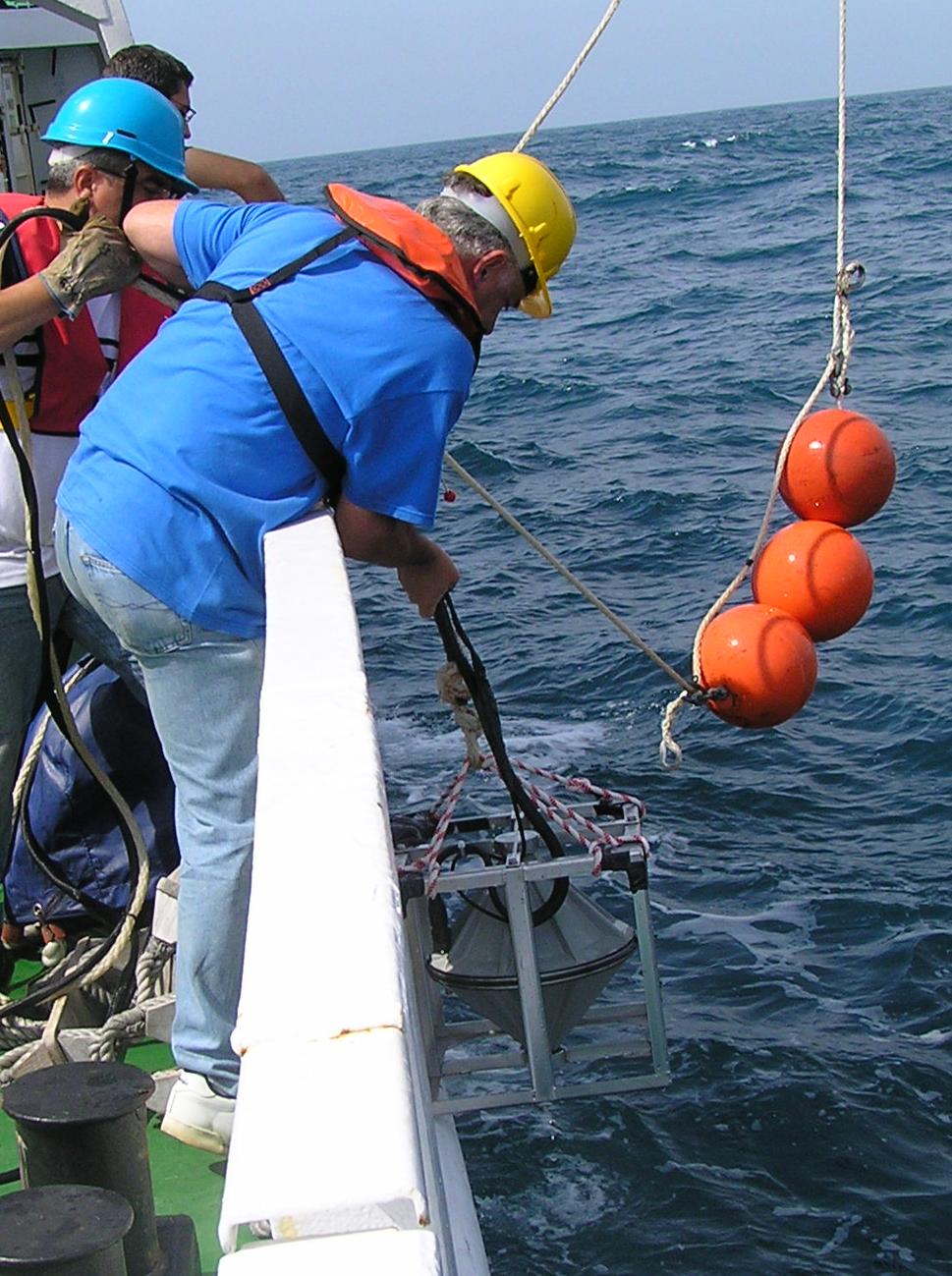
RADAR Sea Trial (RADAR'06) July 7 - 13, 2006
The RADAR'06 sea trial took place on the Portuguese Continental Shelf off the town of Nazaré,
approximately 100 km north from Lisboa. This sea trial involved teams from the Hidrographic Institute of
the Portuguese Navy, the University of Lisboa (FCUL) and the University of Algarve, aboard the research
vessel Auriga, from July 7 to 13, 2006.[...more].
People involved from SiPLAB: S.M. Jesus, C. Soares, N. Martins, F. Zabel and C. Martins.
Data report:
Data repository:
Related publications:
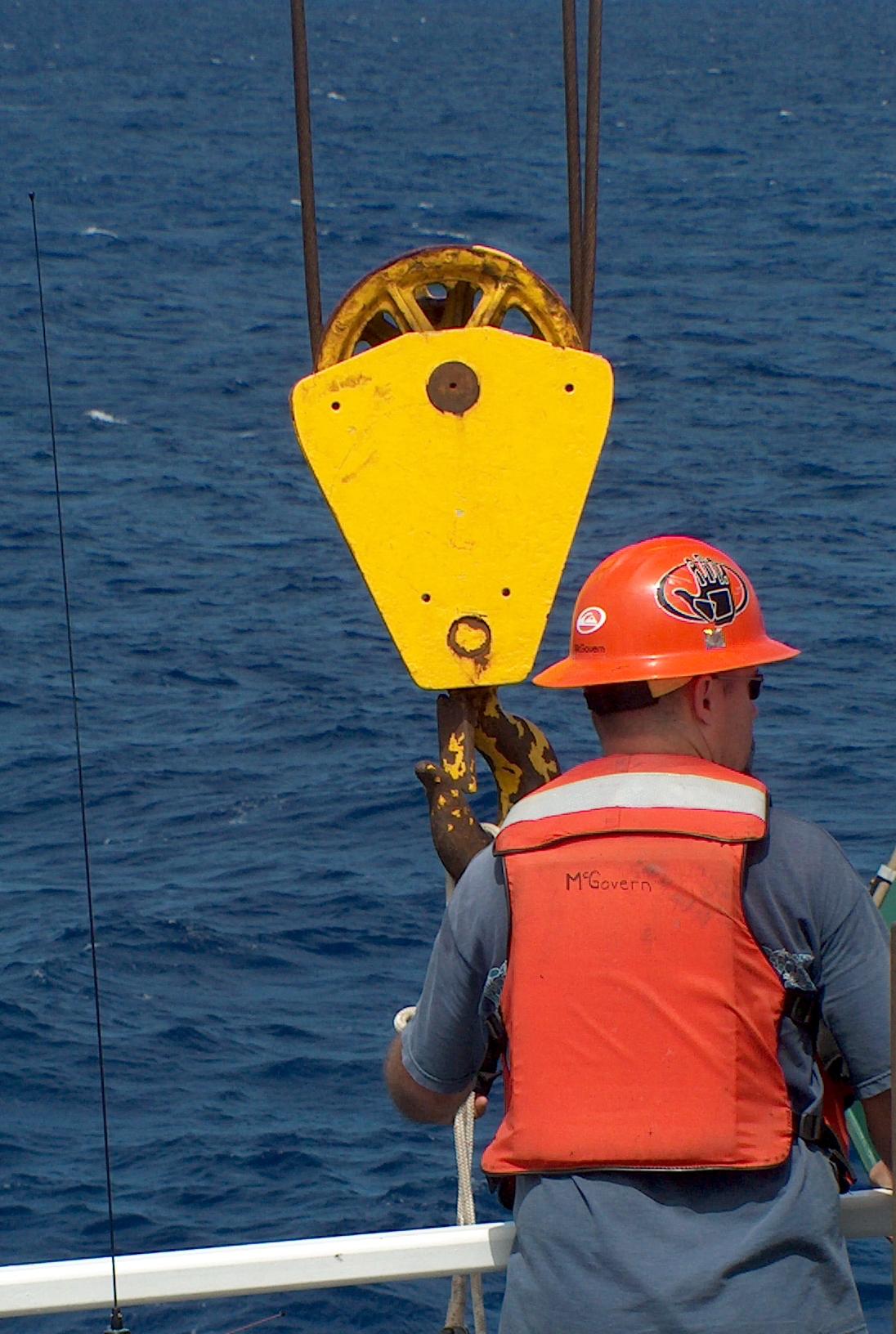
MakaiEx sea trial Sep 11 - Oct 2, 2005
This sea trial took place off the Island of Kauai in Hawai (USA) from Sep 11 to Oct 2, 2005 aboard the
research vessel Kilo Moana. This experiment involved a large number of institutions with the overall
objective of testing high-frequency acoustic methods for environmental based underwater communications,
HF tomography, underwater MIMO, HF matched-field processing, time-reversal or PPC based communications,
etc, [...more].
People involved from UALg: S.M. Jesus, A. Silva and F. Zabel.
Data report: Report 04/2005.
Data repository: none.
Related publications: see also here.
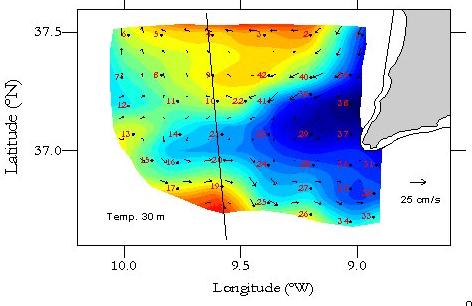
ATOMS'04 sea trial 22 - 26 October, 2004
This sea trial took place off the cape of St. Vincent (Portugal), the southwestern most point of Europe
from Oct 22 - 26, 2004 aboard the NRP D. Carlos I, with the participation of Instituto Hidrográfico and
several teams from the University of Algarve (SiPLAB, EST and CIMA). The objective was to observe in situ
and with acoustic tomography the upwelling filament structure off the west coast of Portugal. In fact only
the oceanographic observation part was achieved due to the weather conditions in the area and in this period
of the year. An example of an observed filament is shown here.
[...more].
People involved from UALg: S.M. Jesus, A. Silva, P. Felisberto, L. Farinha and C. Soares.
Data report: none.
Data repository: none.
Related publications:

MREA'04 sea trial 6 - 11 April 2004
This second participation of SiPLAB on an REA took place during 6-11 April 2004,
in an area off the portuguese west coast, south from Lisbon. SiPLAB was able to
deploy its acoustic equipment including the ULVA array and the newly developed
AOB to form a tomography network and provide environmental online estimates for
inclusion in REA small scale models. This experiment took place under the AOB-JRP
project. [...more].
People involved from UALg: S.M. Jesus, A. Silva, P. Felisberto, C. Soares
and L. Farinha.
Data report: Report 02/2005
Data repository: none.
Related publications:
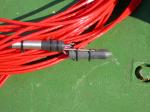
MREA'03 sea trial May 28 - June 26, 2003
This sea trial was organized by the SACLANT Undersea Research Centre, La Spezia (Italy), in the area
north of Elba Island, off the italian Tuscany coast, from May 28 to June 26, 2003. That was primarely
set as an oceanographic sea trial for REA, as a preliminary equipment test under the upcoming AOB-JRP,
to start on January 1st, 2004. The objective of SiPLAB participation was to test the new
Acoustic-Oceanographic Buoy (AOB) concept for REA. An AOB prototype was deployed and succeded to acquire
acoustic data transmitted to onboard ship via a wireless lan connection for imediate processing.
[...more].
People involved from UALg: S.M. Jesus, A. Silva and C. Soares.
Data report: Report 04/2003
Data repository: none
Related publications: see (pdf).
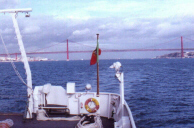
INTIFANTE'00 sea trial 9-29 October 2000
This sea trial was organized by Cintal, under the workframe of projects INTIMATE and INFANTE, with
however the scope of acquiring acoustic data to support also projects TOMPACO and ATOMS. The sea trial
took place in the area off the town of Setúbal, approx. 50 km south from Lisbon. Two vessels from
the portuguese Hidrographic Institute (IH), Portuguese Navy, participated in the sea trial for deploying
and recovering acoustic and oceanographic equipment. Other participating institutions were:
ISR-IST, Lisboa,
IH - Lisboa, and ENEA, Italy.
[...more].
People involved from UALg: S.M. Jesus, A. Silva, C. Soares and C. Lopes.
Data report: Report 02/2001
Data repository:here.
Related publications:
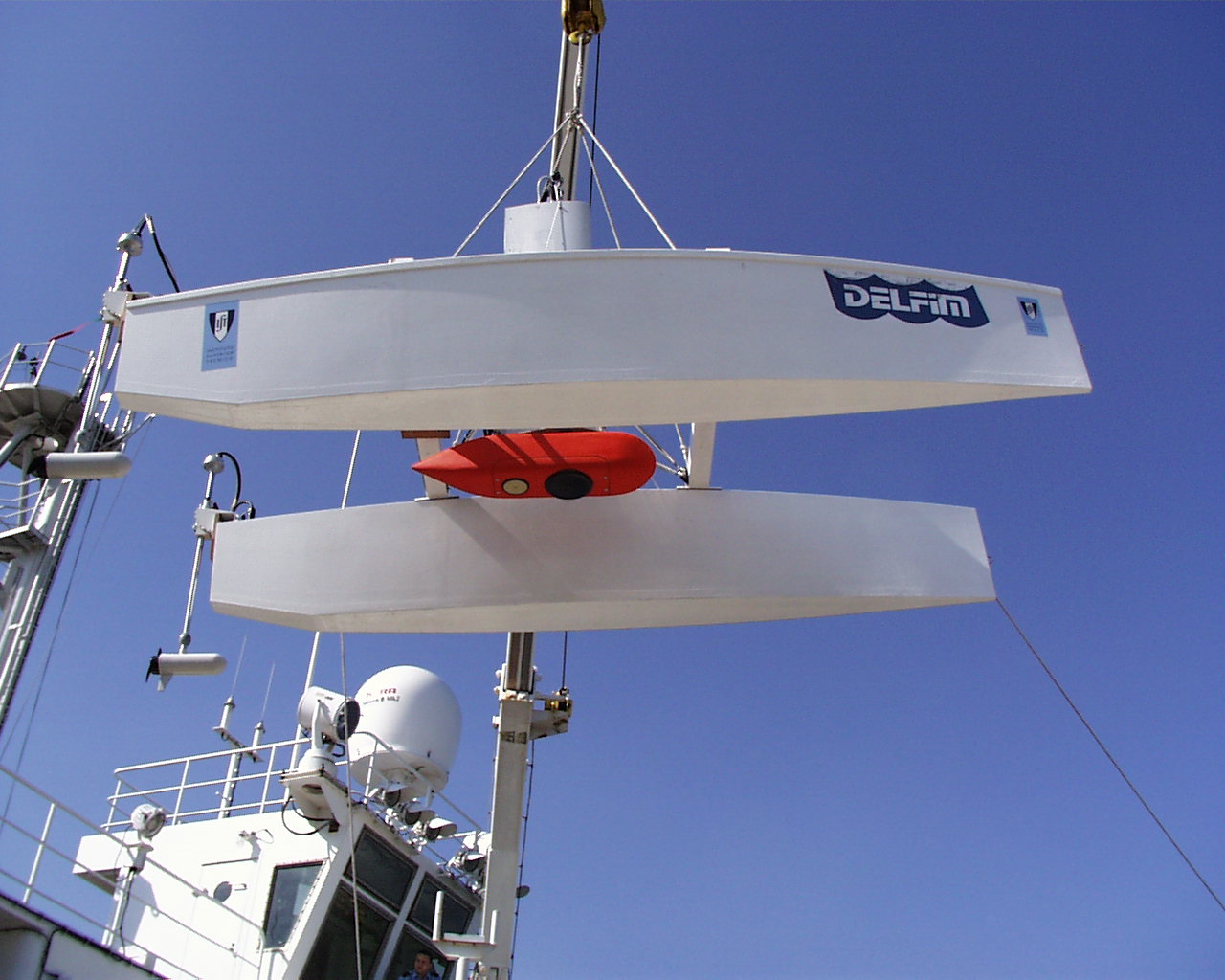
INTIFANTE'99 sea trial 2-23 July 1999
This sea trial was organized by Cintal, under the workframe of projects INTIMATE and INFANTE.
The sea trial took place in the area off Setúbal, approx. 50 km south from Lisbon. The NRP D. Carlos I
of the portuguese Hidrographic Institute (IH), Portuguese Navy, participated in the sea trial for deploying
and recovering acoustic and oceanographic equipment. Other participating institutions were:
ISR-IST, Lisboa,
IH - Lisboa, and DERA, UK.
[...more].
People involved from UALg: S.M. Jesus, C. Soares and C. Lopes.
Data report: no data report available.
Data repository: none.
Related publications:
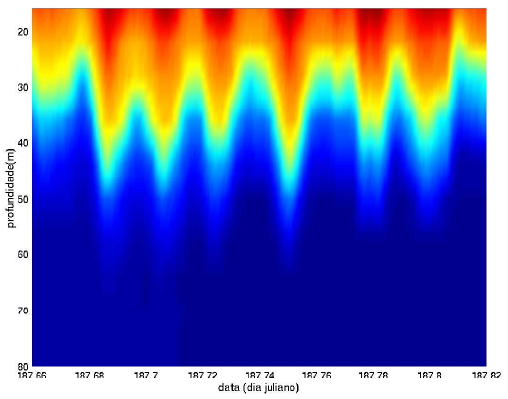
INTIMATE'98 sea trial June 1998
This sea trial was organized by CMO-SHOM (France) in collaboration with the University of Algarve, the
New Jersey Institute of Technology (NJIT), the Hydrographic Institute (Portugal), and DERA (UK), under the
work frame, or as a continuation, of project INTIMATE. The sea trial took place in the Gulf of Biscay in
several working areas for shallow and deep water deployments. Two vessels from the French and UK Navies
participated in the trial.
People involved from UALg: S.M. Jesus and P. Felisberto.
Data report: no data report available.
Data repository: here.
Related publications:
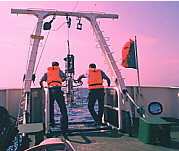
INTIMATE'96 sea trial 14-19 June 1996
This sea trial was organized by SiPLAB, under the workframe of project INTIMATE. The sea trial took
place in the area off the town of Nazaré, approx. 100 km north from Lisbon. Two vessels participated in
the trial: the survey vessel "Andromeda" from the portuguese Hidrographic Institute (IH) and the
"D'Entrecasteaux" from EPSHOM, France. Other participating institutions were:
Saclantcen, La Spezia, Italy,
IH - Lisboa, and CMO/SHOM,
France [...more].
People involved from UALg: S.M. Jesus and P. Felisberto.
Data report: no data report available.
Data repository: here.
Related publications:

MAST2 project sea trial March 1994
This sea trial took place in the Strait of Sicily in March 1994 on board NATO NRV Alliance under
the guidance of the Seabed Acoustics Group of SACLANTCEN, La Spezia. NRV Alliance was towing a 156m
long - 40 hydrophone - 4m spaced horizontal array, for estimating sea bottom geophysical properties;
cw signals in the 100-200 Hz frequency range were transmitted from a towed source; a system measuring
the deformation of the array shape under tow was included in the instrumentation.
People involved from UALg: S.M. Jesus and P. Felisberto.
Data report: no data report available.
Data repository: here.
Related publications:
Data repository (public data sets)
 INTIFANTE'00
INTIFANTE'00
Acoustic data collected during Event 2 (Julian day 289 -October 16, 2000), only receiver 8. The emitted
signal is provided together with additional geometrical information (source and receiver depths, gps logs,
water depth along track, etc...). Data is avaliable
here.
Generic sea trial information can be found in this paper
 INTIMATE'96
INTIMATE'96Saclantcen 4-hydrophone portable array acoustic data for: Event I (5 min), Event II (5 min), Event III (all run). Source ship tracks are given as well as one CTD file for each run. Water depth track is made available for Event III (down slope range dependent). Data is avaliable here. For additional information see publications by Porter and Stephan.
 MAST 2
MAST 2
This is a subset of the data acquired on March 4, 1994 in the Strait of Sicily, during the MAST2 Project
with a compass-tilt meter-press sensor instrumented 40-hydrophone towed array receiving bottom returns from a
simultaneously towed LF J15 sound source (more details about the experimental setup
here). Acoustic data: 25 min; array shape data: 25 min; GPS navigation
and water depth along track: all experiment; Sound velocity: 1 cast made during the acoustic runs.
Data is avaliable here.